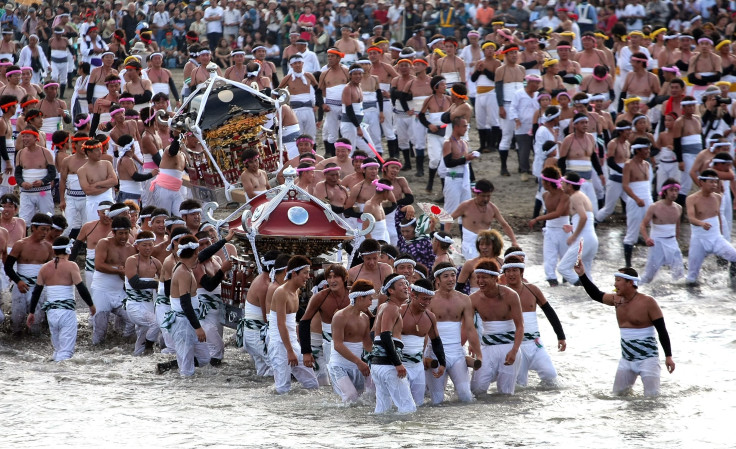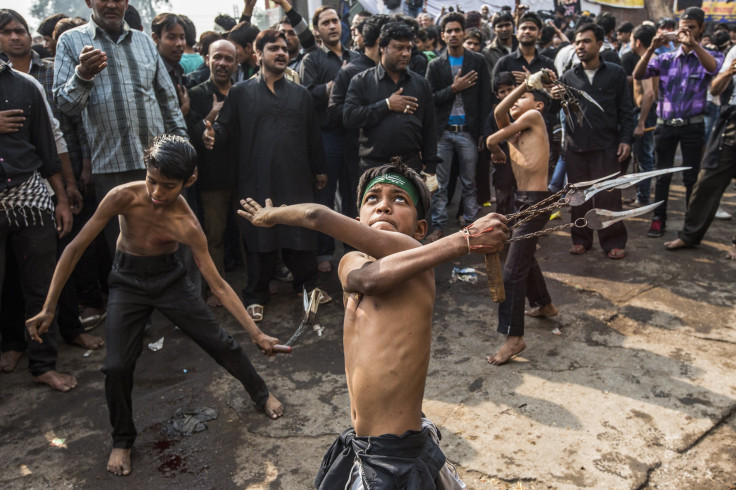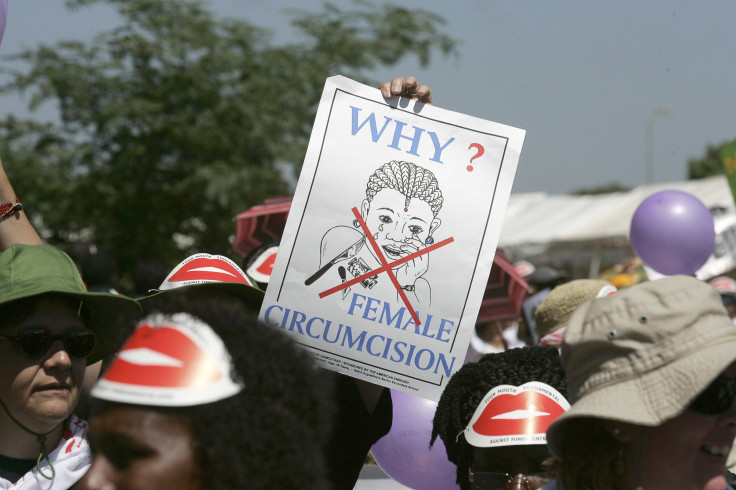Controversial Ancient Rituals Still Practiced In Modern Society

Even as people question whether ancient traditions have a place in today’s society, it would be fascinating to note that there are a number of rituals from an array of religions and cultures that are still practiced in different parts of the world.
Merriam Webster describes a ritual as an action that is “done in accordance with social custom or normal protocol.” However, for a ritual to be completely effective, it has to be intellectually and emotionally satisfying as well as have a strong beginning and ending, wrote Serge Kahili King, author of “Search For Pele,” a book that explores the Huna culture.
The oldest known acts of human ritual date back 70,000 years. Evidence of the same was found inside a cave in the Tsodilo Hills, Botswana, known locally as the “Mountains of the Gods”. Men, in the Stone Age, believed that human beings were descended from snakes and hence cavemen would often make offerings of spearheads to a stone python, Australian news outlet SBS reported.

With time, however, most of the rituals and rites became evolved according to the norms of the changing society or those which no longer pertained to the needs and beliefs of the modern man, became extinct altogether. But there are a number of rituals that stood the test of time, despite their controversial nature and/or being banned by the government of the countries where they are practiced.
“While there has been a move away from religious ceremonies, people still need ritual to mark major points in their life,” Dally Messenger, author of the book “Ceremonies and Celebrations,” said. “Ceremonies are an expression of culture, mechanisms which express and generate love, forge and declare the bond between individuals, and establish and identify the community.”
The following are few controversial rituals that are still practiced today:
Savage Skin
In European countries like Scotland, Bulgaria, Finland, Italy, Portugal, Greece, France, Switzerland, and Germany the Pagan ritual of dressing up like a savage man or an animal still exists. The ritual takes place either during St. Nicholas Day in December or to celebrate Christmas or New Year, the Huffington Post reported.
Regarding why the ritual is observed, Charles Fréger, who studied the tradition and recorded his findings in the book “Wilder Mann” stated that the ritual revolved around “the fear of the darkness. They’re about getting rid of the fear and getting rid of the winter. The traditions are also connected to fertility. You dress like an animal, become the animal and bring fertility to the village. It’s totally universal.”
Female Genital Mutilation
This is one of the cruelest rituals that exist in countries in the sub-Sahara and north-east Africa along a few Asian countries including India.

In this tradition, the female genitalia (clitoris, labia minora, labia majora) of tribal girls between the ages of two and five are removed by using a razor, scissors or knives, leaving a narrow opening, which is just wide enough to allow the passing of urine and menstrual blood. The procedure is performed by unskilled women, who belong to the blacksmith cast, often without the use of anesthesia, according to Refworld.
The motive behind the ritual is to keep female sexuality under control and to restrain women from performing illicit sexual acts, hence ensuring fidelity before marriage. Organizations such as Campaign pour L'abolition des Mutilations Sexuelles (CAMS) and the Environmental Development Action in the Third World (ENDA) have worked tirelessly in raising awareness against the ritual and moving to eradicate the same.
Ashura Bloodletting
Ashura bloodletting is observed by the Shia sect of Muslims all over the world. It is meant to mark the death of the Prophet Mohammad's grandson Imam Husayn at the 7th century battle of Karbala.
To perform the ritual, Muslims walk down the streets in a procession, all the while hitting their heads with daggers or whipping themselves with chains that are fitted with blades, in order to spill their blood. The sentiment behind the ritual is to show remorse and observe penance for the fact that they were not there to fight alongside Husayn in the battle and save his life, Oddee reported.
There is no age limit for participating in the ritual which means that kids and adults can take part in the ritual alike. "A single tear shed for Husayn washes away a hundred sins,” is the popular saying among the Shi’a Muslims.
Kutkot
Kutkot is the ritual of honoring the dead for people of the Philippines. It involves digging up the corpse of a loved one a year from their burial, dressing it up in fresh clothes and arranging a feast around it.
Mangyans also perform their traditional dance called “Taruk” while carrying the bones of the dead. The family which dug up the corpse would then keep the body inside their home for another year before returning the bones to the grave.
Hadaka Matsuri
The Hadaka Matsuri, also known as the Naked Man festival is still carried out in some Japanese villages where one man or “Shin-Otoko” is chosen to absolve the miseries and misfortunes of the entire village, according to Enjoy The Moment Rituals.
The origin of the ritual can be traced back to hundreds of years ago when many regions of Japan was plagued by misfortune and disease. Since the Japanese believe that a naked body contains the power to absorb all kinds of evil, the chosen man would have to strip down to his bare essentials. Then everyone would proceed to touch him in order to cleanse themselves of sins, after which the “Shin-Otoko” would be banished from the village forever.
Nowadays, however, people consider an honor to participate in the festival, which men in loin clothes fighting to find the Shingi or lucky stick, which is hidden in the cold mud. The one who finds it gets to represent the entire village.
© Copyright IBTimes 2024. All rights reserved.






















